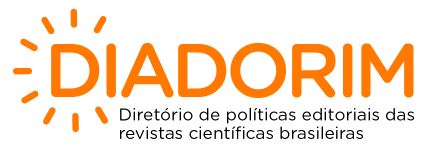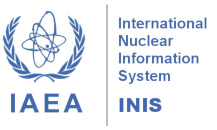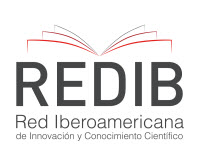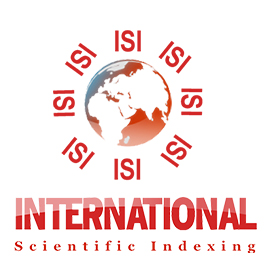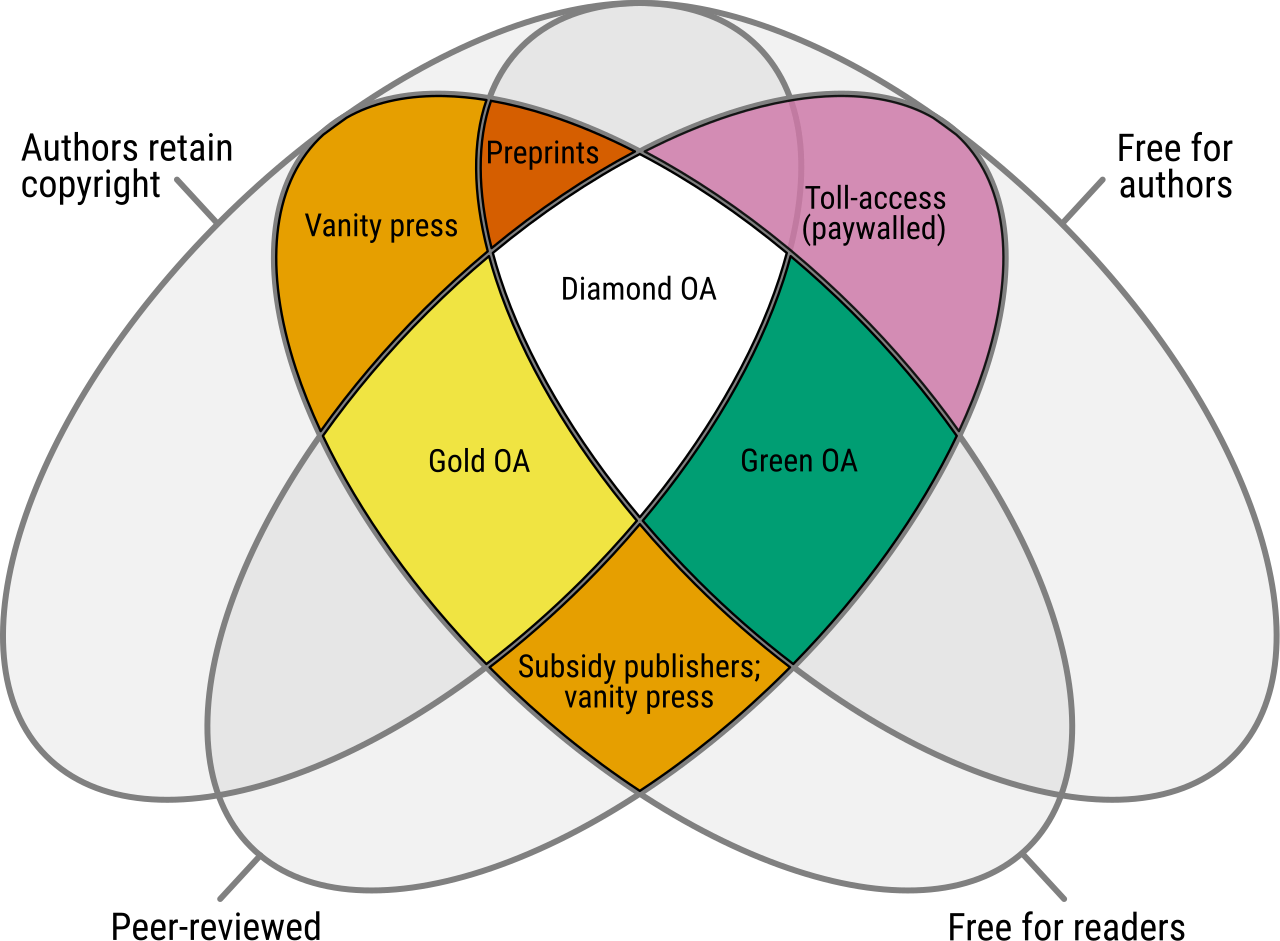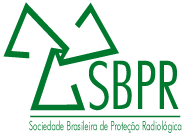Ginkgo biloba Extract: A Preliminary Study on Its Radiomitigative Potential Using the Conventional Dicentric Chromosome Assay
Extrato de Ginkgo biloba: Um estudo preliminar sobre seu potencial radiomitigador usando o ensaio convencional de cromossomo dicêntrico
DOI:
https://doi.org/10.15392/2319-0612.2025.2910Keywords:
Ginkgo biloba, Ionizing radiation, cytogenetic dosimetry, dicentricAbstract
Radioprotectors and radiomitigators can be substances of natural or synthetic origin that, once administered to the human body, are capable of preventing, protecting against, or reducing damage caused by radiation. This study aimed to assess the radiomitigating potential of Ginkgo biloba extract by examining the frequency of dicentric chromosomes in irradiated human lymphocytes. Blood samples were obtained from a healthy volunteer. One sample was left in the laboratory as a control, and the others were irradiated in a 60Co source at a dose of 2 Gy and incubated in test concentrations of Ginkgo biloba extract (0.025 and 0.05 μg/ml) according to a standard protocol. Complete metaphases were analyzed, and the frequencies of alterations were statistically evaluated to verify the radiomitigating potential of Ginkgo biloba extract. The ANOVA and Tukey tests revealed a statistically significant difference between the groups treated and untreated with Ginkgo biloba exposed to 2 Gy of radiation (p < 0.05), indicating that both concentrations tested were able to reduce the damage. In this in vitro study, Ginkgo biloba extract was able to reduce the frequency of dicentric chromosomes in irradiated human lymphocytes, with a concentration of 0.025 μg/ml standing out.
Downloads
References
[1] OKUNO, Emico. Radiação: efeitos, riscos e benefícios. Oficina de Textos, 2018;
[2] RAMOS, Ricardo; BATISTA, Eutropio Vieira. Irradiação de alimentos: Revisão comparativa, histórica e difusão do processo. Brazilian Journal of Science, v. 2, n. 8, p. 94-103, 2023. DOI: https://doi.org/10.14295/bjs.v2i8.313
[3] SAMOYLOV, A. S.; BUSHMANOV, A. Yu; GALSTYAN, I. A. Medical management: major lessons learned from the Chernobyl accident (the review). Journal of Radiological Protection, v. 41, n. 3, p. R51, 2021. DOI: https://doi.org/10.1088/1361-6498/ac14d4
[4] OKUNO, Emico. Efeitos biológicos das radiações ionizantes: acidente radiológico de Goiânia. Estudos avançados, v. 27, p. 185-200, 2013. DOI: https://doi.org/10.1590/S0103-40142013000100014
[5] BARNES, J. L.; ZUBAIR, M., JONH, K., POIRIER, M. C., MARTIN, F. L.; Carcinogens 49 and DNA damage, Biochemical Society Transactions, v. 46, n. 5, p. 1213–1224, 2018. DOI: https://doi.org/10.1042/BST20180519
[6] LUDOVICI, Gian Marco et al. Cytogenetic bio-dosimetry techniques in the detection of dicentric chromosomes induced by ionizing radiation: A review. The European Physical Journal Plus, v. 136, n. 5, p. 482, 2021. DOI: https://doi.org/10.1140/epjp/s13360-021-01447-3
[7] OBRADOR, Elena et al. Radioprotection and Radiomitigation: From the Bench to Clinical Practice. Biomedicines, v. 8, n. 11, p. 461, 2020. DOI: https://doi.org/10.3390/biomedicines8110461
[8] [8] DE SIQUEIRA, Williams Nascimento et al. Study of the potential radiomitigator effect of quercetin on human lymphocytes. Inflammation, v. 42, p. 124-134, 2019. DOI: https://doi.org/10.1007/s10753-018-0878-4
[9] DOWLATH, Mohammed Junaid Hussain et al. Effects of radiation and role of plants in radioprotection: A critical review. Science of the Total Environment, v. 779, p. 146431, 2021. DOI: https://doi.org/10.1016/j.scitotenv.2021.146431
[10] DELOUISE, Lisa et al. Identifying novel radioprotective drugs via salivary gland tissue chip screening. Research Square, 2023.
[11] MONTORO, Alegría; OBRADOR, Elena; MISTRY, Dhruti; FORTE, Giusi I.; BRAVATÀ, Valentina; MINAFRA, Luigi; CALVARUSO, Marco; CAMMARATA, Francesco P.; FALK, Martin; SCHETTINO, Giuseppe; AHIRE, Vidhula; DAEMS, Noami; BOTERBERG, Tom; DAINIAK, Nicholas; CHAUDHARY, Pankaj; MISHRA, Kaushala Prasad. Molecular Radiation Biology. In: BAATOUT, Sarah (Org.). Radiobiology textbook. Cham: Springer, 2023. p. 83–189. DOI: 10.1007/978‑3‑031‑18810‑7.
[12] EISVAND, Farhad; RAZAVI, Bibi Marjan; HOSSEINZADEH, Hossein. The effects of Ginkgo biloba on metabolic syndrome: A review. Phytotherapy Research, v. 34, n. 8, p. 1798-1811, 2020. DOI: https://doi.org/10.1002/ptr.6646
[13] ŠAMEC, Dunja et al. Biflavonoids: Important contributions to the health benefits of Ginkgo (Ginkgo biloba L.). Plants, v. 11, n. 10, p. 1381, 2022. DOI: https://doi.org/10.3390/plants11101381
[14] ZHAO, Beibei et al. UV-B promotes flavonoid synthesis in Ginkgo biloba leaves. Industrial Crops and Products, v. 151, p. 112483, 2020. DOI: https://doi.org/10.1016/j.indcrop.2020.112483
[15] XIONG, Yuan et al. Descoberta de inibidores naturais contra SARS-CoV-2 3CLpro das folhas de Ginkgo biloba por meio de triagem em grande escala. Fitoterapia , p. 104909, 2021. DOI: https://doi.org/10.1016/j.fitote.2021.104909
[16] FEODOROVA, Y., Falk, M., Mirny, L. A., & Solovei, I. Viewing nuclear architecture bthrough the eyes of nocturnal mammals. Trends in cell biology, 30(4), 276-289. 2020. DOI: https://doi.org/10.1016/j.tcb.2019.12.008
[17] YUAN, Qiuju et al. Effects of Ginkgo biloba on dementia: An overview of systematic reviews. Journal of ethnopharmacology, v. 195, p. 1-9, 2017. DOI: https://doi.org/10.1016/j.jep.2016.12.005
[18] SINGH, Sandeep Kumar et al. Neuroprotective and antioxidant effect of Ginkgo biloba extract against AD and other neurological disorders. Neurotherapeutics, v. 16, n. 3, p. 666-674, 2019. DOI: https://doi.org/10.1007/s13311-019-00767-8
[19] INTERNATIONAL ATOMIC ENERGY AGENCY, IAEA. Cytogenetic dosimetry: 52 applications in preparedness for and response to radiation emergencies. IAEA, 2011.
[20] MENDES, Mariana Esposito et al. Calibration curves by 60 Co with low dose rate are different in terms of dose estimation–a comparative study. Genetics and molecular biology, v. 43, p. e20180370, 2020. DOI: https://doi.org/10.1590/1678-4685-gmb-2018-0370
[21] MONTORO, A. et al. Assessment by cytogenetic analysis of the radioprotection properties of propolis extract. Radiation protection dosimetry, v. 115, n. 1-4, p. 461-464, 2005. DOI: https://doi.org/10.1093/rpd/nci026
[22] ALOK, Amit; Agrawala, Paban K. Repurposing sodium diclofenac as a radiation countermeasure agent: a cytogenetic study in human peripheral blood lymphocytes. Mutation Research/Genetic Toxicology and Environmental Mutagenesis, 503220–. doi:10.1016/j.mrgentox, 2020. DOI: https://doi.org/10.1016/j.mrgentox.2020.503220
[23] NIU, J.; Straubinger, R. M., & Mager, D. E.., 2019. Pharmacodynamic Drug–Drug Interactions. Clinical Pharmacology & Therapeutics, v. 105, n. 6, p. 1395–1406, jun. doi: 10.1002/cpt.1434. DOI: https://doi.org/10.1002/cpt.1434
Downloads
Published
Issue
Section
Categories
License
Copyright (c) 2025 Julio Cesar Gomes da Silva, CAIO C. V. B. G, MENDES M. E., LOPES I. M. S. S., MELO A. M. M. A, LIMA F. F.

This work is licensed under a Creative Commons Attribution 4.0 International License.
Licensing: The BJRS articles are licensed under a Creative Commons Attribution 4.0 International License, which permits use, sharing, adaptation, distribution and reproduction in any medium or format, as long as you give appropriate credit to the original author(s) and the source, provide a link to the Creative Commons license, and indicate if changes were made. The images or other third party material in this article are included in the article’s Creative Commons license, unless indicated otherwise in a credit line to the material. If material is not included in the article’s Creative Commons license and your intended use is not permitted by statutory regulation or exceeds the permitted use, you will need to obtain permission directly from the copyright holder. To view a copy of this license, visit http://creativecommons.org/licenses/by/4.0/




